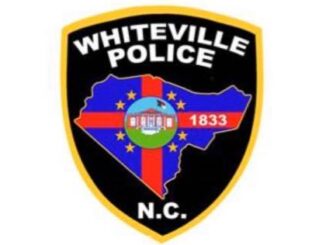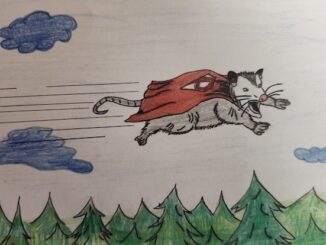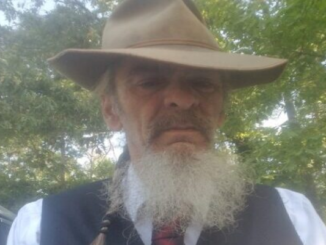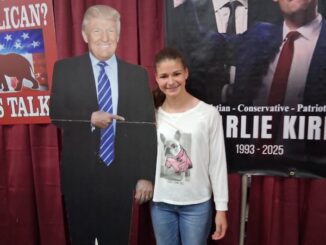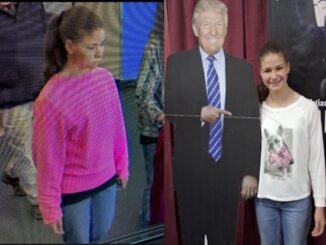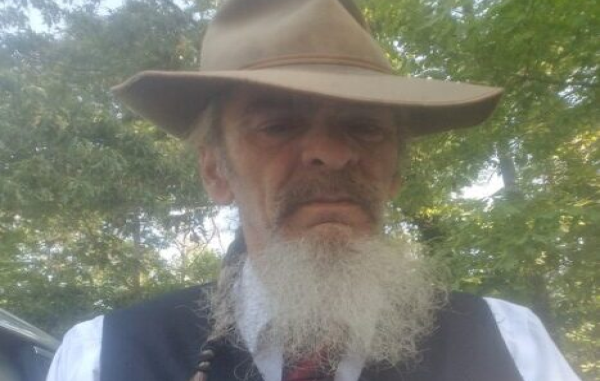
Tucked away in one of my boxes of rusty treasures is an all-but-worthless pocketknife.
I found it far under an abandoned house on the day we were catching puppies that eventually gave rise to a dynasty of good dogs that ended with Walter the Wonder Dog. Good dogs are a column for another day, though.
The pocketknife is nothing special; it’s too rusted shut to open, and the stag handles are chipped. It had two blades, opening side by side. It wasn’t a cheap knife –the bolsters and pins are brass, and the worn butt was once nickel plated. The steel still throws a spark when struck with a rock. It likely cost around a dollar when it was new in the 1930s, when a dollar meant something.
I’ve often wondered how it came to be so far up under a rundown house; it was likely dropped by a workman, or maybe a resident fixing something, or even a little kid who was exploring.
I have far too many boxes of rusty treasures tucked away here and there, I guess. There would be more had I not impulsively traded a high-end metal detector for a couple of rifles nearly 50 years ago. Between making ends meet and not having time for the hobbies I claim to enjoy and the responsibilities I have no choice but satisfy, I’ve never gotten around to buying another metal detector, although I keep telling myself someday, someday.
One of my mentors who also appreciated old rust taught me how to use that first detector. We had a perfect place, since the Averasboro Battlefield was but a few miles away. My old friend would pay us young’uns by the pound for bullets we found. Most of those Minie’ and round balls were melted down and used for modern bullets, a practice we find horrifying now, but sadly they were literally 50 cents a pound back then. Even sadder is the fact that there are so many more left scattered around on the battlefields of our country.
We found buttons, and pieces thereof; hooks, links of chain, pieces of buckles and other ephemera. While some of that we picked up was from those few bloody days in 1865, most of the things we found were bits and pieces of the lives of folks who lived there before and after the war. I have a few of those bullets and other things on a board at my office, along with some other pieces squirreled away here and there, as if I were a treasure-collecting crow more interested in old rust and verdigris than shiny things.
Later, long after I had traded away my detector, I began doing what we called findings with a friend who also loved history and old architecture. We developed a network of folks who would let us know when Old Man So-and-So’s house was about to be torn down, or when Such-and-Such found an old barn nobody knew about down past where the twisted oak tree was before the last storm.
More times than not we never came home with anything but some handwrought nails or similar junk, but occasionally we really scored, like the time we found a door with a date spelled out in heavy decorative nails, and were able to determine the door came from a colonial era courthouse.
My partner had an eye for old wood, but I was known as the one who could smell rust; whether or not I had some extrasensory ferrous-detecting olfactory nerves is up for discussion, but I did have a way of finding the most unlikely things in more unlikely places. We once pulled 100 pounds of chain – only about ten links – after I obsessed over poking around a sandpile. My buddy identified it as an anchor chain. Why was that chain sixty miles from the nearest ocean? Your guess is as good as mine, and just as likely to be right.
When I was a small child, my favorite place to play was beside the porch where the original owner of our house supposedly paid his workers each Saturday. I dug pennies, dimes and quarters from the last quarter of the 19th century and the first few years of the 20th in the rich black earth beneath the ivy-encrusted oak, along with an 1886 silver dollar which I still have and cherish. I can only imagine the heartbreak the original owner of that dollar felt when that chunk of hard-earned money somehow slid from a pocket and remained hidden for decades before an industrious little boy with a shovel, a water hose and no supervision found it.
There were other treasures around that old house as well: nails, odd bits of metal, a few horseshoes, broken pieces of tools, an antique golf club, and spoons (likely used the same way I used my mother’s second-best spoons, as impromptu shovels and spades). When we moved from that house, I reburied one of the old tin clad spoons I found near the end of the porch. The house is gone now, but I’d like to think that spoon is permanently entombed down there beneath the asphalt that replaced our home.
I have always been an addict of old metal, old broken glass, bits of pottery and rusted, cracked, unidentifiable detritus left behind by those who walked here before. My parents used to wring their hands at the things I would drag home from the riverfront when we visited my grandmother: melted hunks of glass from the big fire that burned the boardwalk, rusted chunks of metal begging for the opportunity to share tetanus, splintering old pieces of wood, all treasures in my eyes. Those relics might have been messy, possibly dangerous and cumbersome to take home, but they inevitably brought out stories of the boardwalk, the fire, other fires, and the town as it had been when my parents were much, much younger.
From a later fortuitous wander, I have a 1930s penny that I found perhaps a foot away from the point of an atl-atl “dart,” what most would see as a spear. The tip was broken thousands of years ago, and the penny obviously lost at some point much later. There’s history in both, however, as well as in the old pocketknife I found rusting in the dust under an unwanted house. Those histories can never be written, however, since the players in those scenes have long since gone on to their final rewards.
A friend who recently retired bought a metal detector, and he is constantly finding ripe places to hunt. He has scored some mysteries of his own, some whose value is actually tangible. Another friend has a reputation for her ability to find absolute treasures in old trashpiles. She doesn’t look like the kind of lady who would dive headlong into a pile of thorn-covered rusting cans and glinting broken bottles, dodging copperheads and black widows, but she understands the lure of the lost things, things that were discarded or lost, and sometimes just forgotten.
I may not have a metal detector, and I can’t walk the rows of a freshly plowed field for hours anymore, but the desire to find old things is still there and strong. It’s difficult for me to fight my way into a cache of old bottles, or carefully stalk my way down a railbed, looking for old bottles.
But I still stop and take a second look at any odd shaped rock, glint of broken glass, or that dull reflection that might mean a piece of metal. Every single one to me is a rusty treasure, another mystery that we can never solve.









